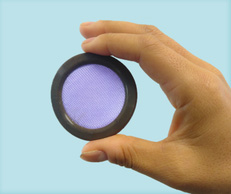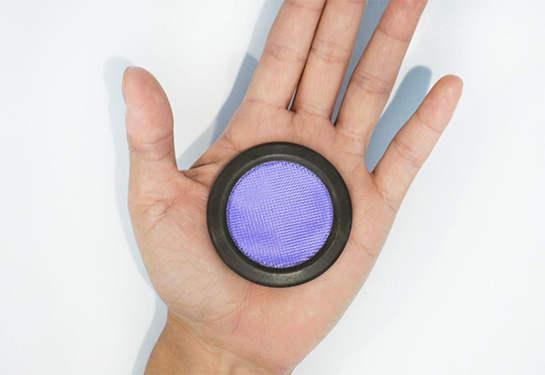Hormone-free barrier contraceptive undergoing clinical trial at UC Davis Health
Recruitment open for an investigational vaginal birth control designed for continuous use
The UC Davis Department of Obstetrics and Gynecology is recruiting potential participants from the ages of 18 to 40 for a National Institutes of Health (NIH)-funded pivotal trial of an investigational hormone-free monthly intravaginal contraception. The device, called Ovaprene, is a silicone ring with a tightly woven material across the middle that contains substances that interfere with sperm movement. Ovaprene is inserted into the vagina at the end of menses and worn until the beginning of the next menstrual cycle.
If approved, Ovaprene would be the first hormone-free monthly intravaginal birth control designed for sustained use, potentially reducing user errors that can lead to unwanted pregnancies.

“It’s a hormone-free birth control that is inserted once monthly and doesn’t require placement with every act of intercourse,” said Obstetrics and Gynecology physician Mitchell Creinin, who is leading the study at UC Davis. “Condoms are the most commonly used barrier method in the U.S. Condoms and other barrier methods, like diaphragms and cervical caps, are used at the time of intercourse. But Ovaprene is a first of its kind hormone-free method that is designed to stay in place and work continuously throughout the menstrual cycle.”
Healthy, heterosexual, sexually-active people who are not desiring pregnancy over the 12-month duration of this study can learn more about taking part in the trial at UC Davis Health Studypages and take a brief online survey to assess their eligibility. Financial compensation is available for participants.
Ovaprene’s design to reduce sperm motility
Ovaprene is a flexible silicone ring with a tightly woven material across the middle. Ovaprene sits in the vagina over the cervix. Creinin described it as similar to a diaphragm, but smaller. The substances in the tightly woven material include a form of iron; the substances create an environment that interferes with sperm’s ability to swim.
Daré Biosciences, Ovaprene’s developer, has performed post-coital testing on Ovaprene as required by the Food and Drug Administration (FDA). That earlier study was also performed at UC Davis, led by Obstetrics and Gynecology physician Melody Hou, who is also a co-investigator on this current Ovaprene study. The post-coital testing study showed that sperm were unable to reach the cervical mucus when participants using Ovaprene engaged in a single act of intercourse. The next step is for Ovaprene to go through this pivotal trial to determine its effectiveness over time.
Creinin noted that Ovaprene is unique among hormone-free barrier contraceptives.
Clinical trials to test Ovaprene’s effectiveness
The NIH Clinical Trials Network, of which Creinin is a member, and Daré Bioscience are collaborating on this clinical trial to test Ovaprene’s effectiveness. The trial will include up to 656 participants at about 20 specially selected research locations throughout the United States.
For the trial, UC Davis Health is recruiting healthy heterosexual participants who plan on having vaginal sex at least four times per month for the 12-month duration of the trial. Participants must commit to using Ovaprene as their sole method of birth control over the period of 13 consecutive menstrual cycles, and have no known risk of fertility issues or medical complications due to pregnancy. Interested participants will be screened to determine their eligibility, and those who are selected will keep a diary of their menstrual cycles and sexual activity.
During participants’ eight clinic visits, researchers will collect vital signs, blood and urine samples, and vaginal swabs to test for sexually transmitted infections (STIs), since Ovaprene cannot prevent STIs. They’ll also show participants how to properly insert Ovaprene.
“This is a unique opportunity for people in our area to take part in a critical study,” said Creinin. “It’s exciting because it's the first hormone-free intravaginal method for full-cycle use.”




